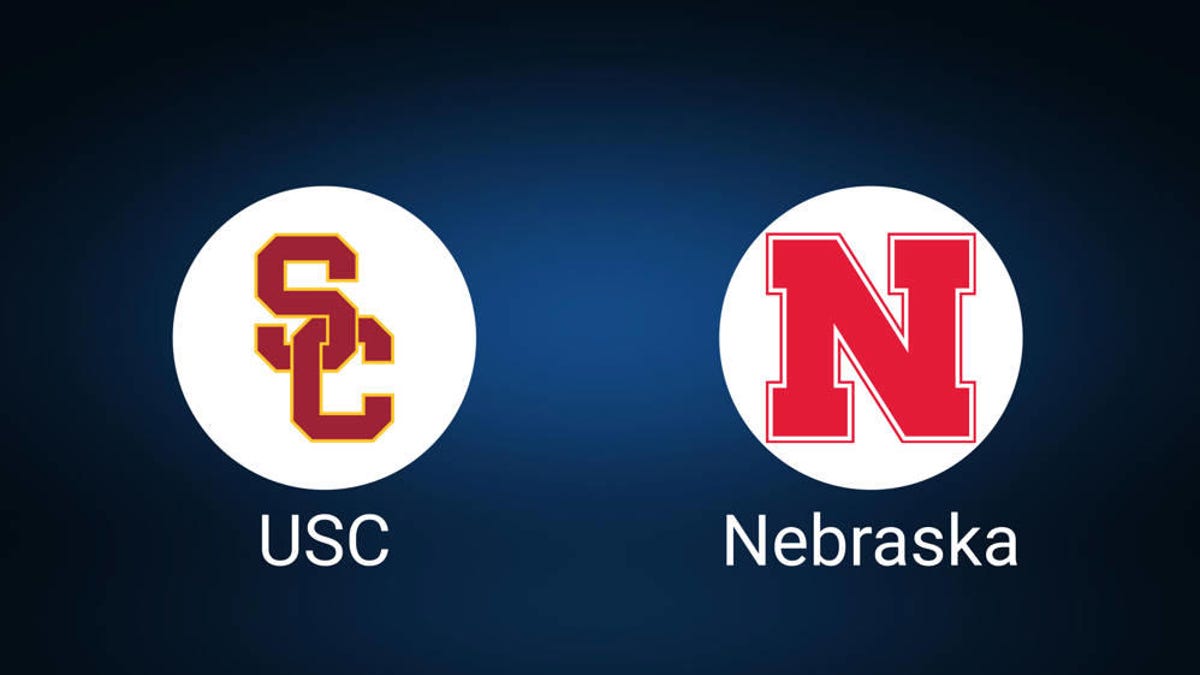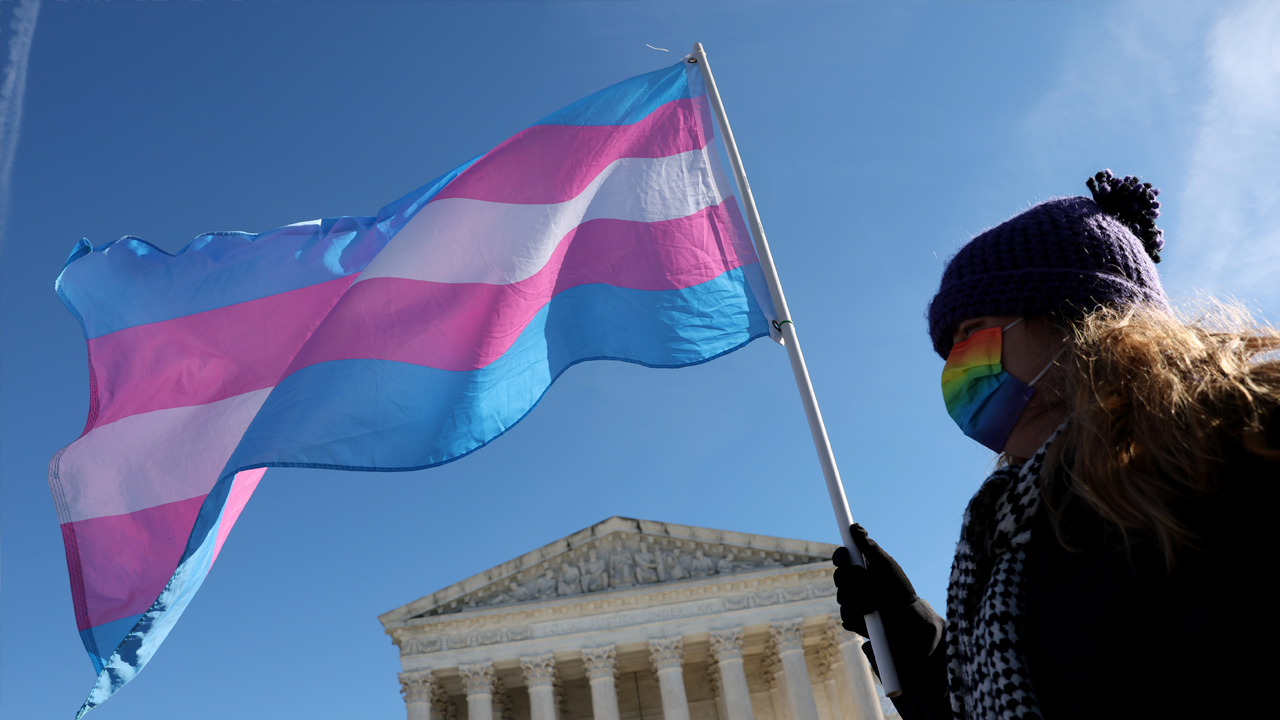Alaska
Bartlett pulls out 3OT thriller, Dimond rides the storm: Alaska high school Week 5 roundup

ANCHORAGE, Alaska (KTUU) – As the playoffs inch closer, each successive week of high school action carries more seeding implications and general importance – and one could tell as much from watching the slate of games this weekend.
Every team in the state was active this week except Seward in 9-man, giving plenty of opportunities for statement performances at every level.
Bartlett 12 – Service 6 (3OT)
Service played host to Bartlett looking to extend its record to 5-0, but couldn’t survive a chaotic, back-and-forth game that featured 12 combined turnovers and defensive dominance on both sides.
Golden Bears standout Deuce Alailefaleula notched a first-quarter interception and fell on an errant Service snap to tie the game at 6 late in regulation. After two overtime frames with no scoring, Bartlett back Colt Jardine plunged in for the walk-off touchdown on the first play of triple-OT.
Dimond 25 – Colony 22
The Dimond Lynx invaded a wet and wild Pride Field to take on Colony, and weathered the storm by scoring 19 unanswered points to eke out their first win of the season.
Colony fans huddled underneath tents and umbrellas watched in horror as Dimond surged ahead on a late touchdown strike, before the Knights’ last-gasp drive ended in a sack.
Eagle River 14 – Palmer 31
Though it was a much tighter contest most of the way than the final score would indicate, Palmer’s high-powered offense continued to produce in a similarly rainy matchup with Eagle River.
Twenty-four unanswered Moose points helped Palmer extend its winning streak to four, and secured its first 4-1 start since 2013.
WEEK 5 HIGH SCHOOL FOOTBALL SCORES
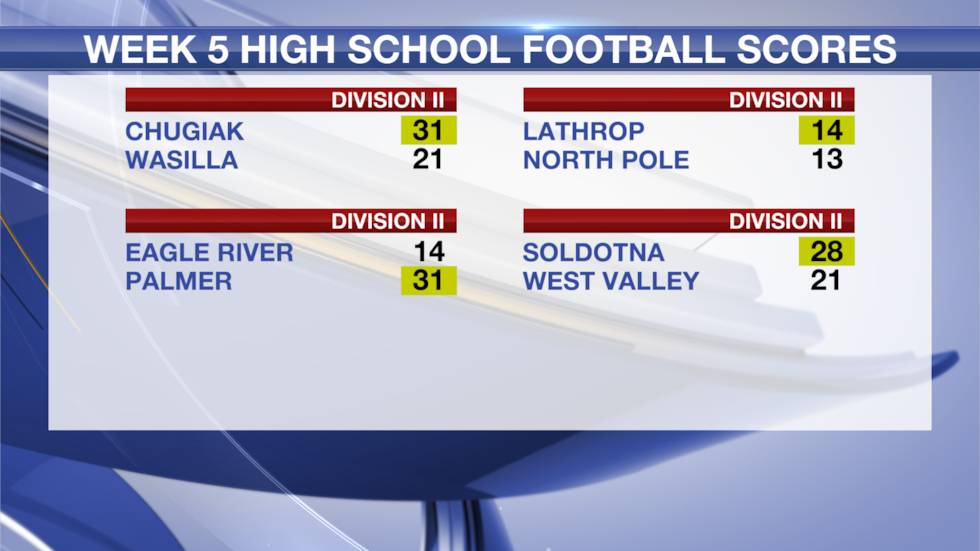
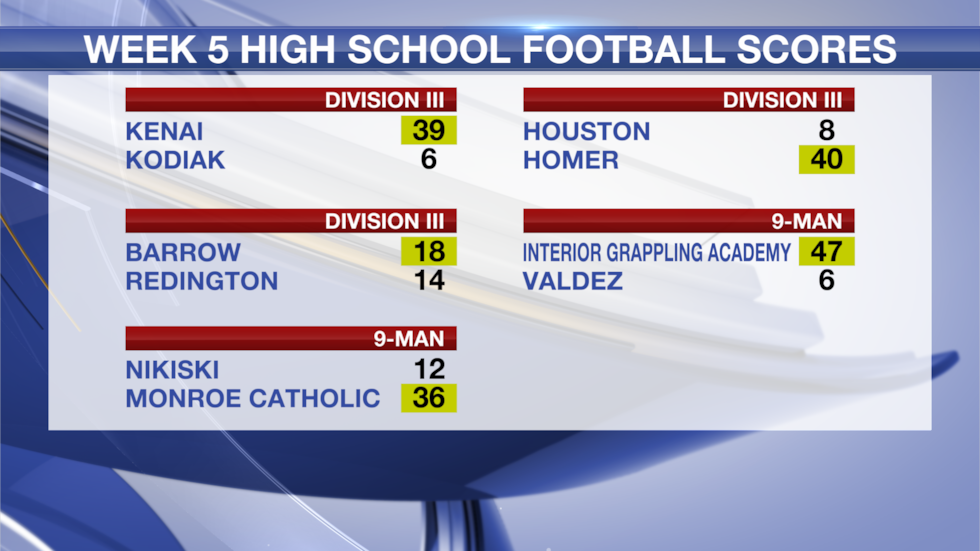
See a spelling or grammar error? Report it to web@ktuu.com
Copyright 2025 KTUU. All rights reserved.

Alaska
How much does an Alaska cruise cost? Not as much as you might think – The Points Guy
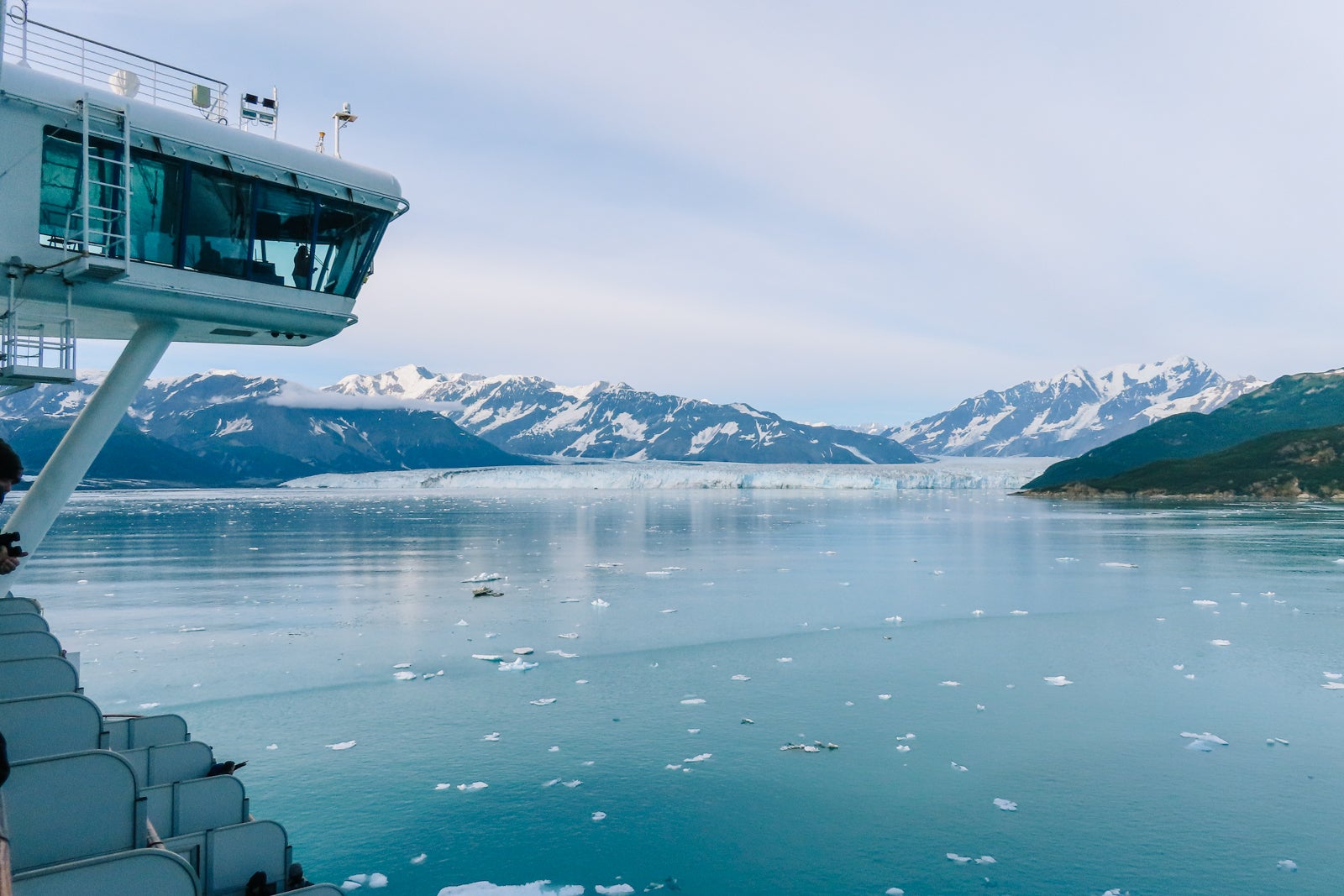
Glaciers so immense and blue they don’t seem real. Snow-dome mountains. A never-ending parade of caribou, whales, bears and seals. All the spectacular things you’ll see on an Alaska cruise will take your breath away — but the price tag doesn’t have to.
These voyages can be pricey, and costs can add up beyond the cruise fare. However, with smart planning, you can experience all the soul-stirring beauty Alaska has to offer without breaking the bank.
Entry-level cabins cost less than you think
Alaska cruises may seem like a splurge, but entry-level cabins are surprisingly affordable. Inside cabins (those without windows) offer the best value, with prices around the $500 mark. For instance, a seven-day “Voyage of the Glaciers” sailing with Princess Cruises in May 2026 starts at just $433 per person. It’s a clever hack if you value adventure over comfort, giving you more cash to spend on shore excursions, the cost of which can quickly add up to more than the actual fare. While you will miss out on private views, you’ll find no shortage of viewing decks and lounges.
Ocean-view cabins add a window and natural light, sometimes for only a few hundred dollars more. Prices vary by cruise line, ship and itinerary. Balcony cabins cost more again but offer front-row seats and a private viewing platform for all the action that makes an Alaska cruise so breathtaking. Watching whales breach or a glacier calve from the privacy of your balcony is a once-in-a-lifetime experience many travelers don’t mind spending for.
At the top end are luxury suites, with the price tag to match. These cost north of $2,000 and come with perks like priority boarding, premium dining and sometimes even shore excursions — making them the ultimate way to cruise Alaska in style.
The 5 most desirable cabin locations on any cruise ship
Extras can add up
Luxury cruise lines can seem expensive, but they often deliver more value than you’d expect. Per-person prices for a luxury Alaska cruise generally start around $3,000 or $4,000 but can climb to more than $6,000 for the most exclusive lines and cabins. On lines like Silversea Cruises, Seabourn Cruise Line and Crystal, fares typically include premium drinks, gratuities, Wi-Fi and curated shore excursions such as glacier hikes and dogsled rides. These experiences can run into the hundreds if booked separately. Add the convenience, attentive service and style that come with a high-end cruise, and the appeal becomes clear.
Budget cruise fares, by contrast, rarely tell the whole story. Taxes, fees and steep port charges are usually added at checkout, and once on board, expenses can mount quickly. Drink packages, specialty dining, Wi-Fi, gratuities and even bottled water often come at an extra cost. Shore excursions — a highlight of any Alaska cruise — can range from $50 to several hundred dollars per person. Meals, souvenirs and transfers off the ship can further stretch your budget. Tally up the costs, and the difference between a high-end cruise and a mainstream sailing may be smaller than you think.
Flights can make one-way cruises pricier than they seem
One-way sailings from Vancouver, British Columbia, to Seward, Alaska (or the reverse) can look like a bargain. However, it’s a good idea to check flight prices before booking a spot. Getting to and from different ports, particularly in more remote Alaskan towns, can be expensive due to limited schedules and higher fares. Bad weather can also cause cancellations and delays, sometimes for days.

Reward your inbox with the TPG Daily newsletter
Join over 700,000 readers for breaking news, in-depth guides and exclusive deals from TPG’s experts
Round-trip cruises from Seattle seem more expensive but often work out cheaper overall — and that’s because you are getting to and from a major airport. Whether you fly, drive or take the train, reaching Seattle is generally easier and more affordable than coordinating one-way travel in and out of Alaska.
How much does a cruise cost?
Cruising is sometimes the only way to explore Alaska
Juneau, Alaska, is the only U.S. state capital without road access, so you have to fly or cruise there. The same is true for Alaska’s remote towns and wild coastal areas, many of which rely on ships as their main connection to the outside world.
Add in the cost of accommodations, food, entertainment and travel between ports, and that Alaska cruise suddenly offers a good value. Plus, it also offers a seamless way to explore Alaska’s untamed frontier.
Cruisetours that combine a coastal cruise with guided inland adventures are another great option. These offer an affordable way to experience both Alaska’s dramatic coastline and its vast interior without the hassle of booking multiple trips or facing hidden costs along the way.
Consider shoulder season for fewer crowds and better deals
Alaska’s shoulder season — typically April through May and again in September — is a sweet spot for travelers looking to avoid peak-season prices and crowds. The weather is cooler, the days are shorter and there’s a higher chance of rain. However, you’ll also enjoy spectacular fall foliage, a chance to spot the northern lights and a quieter, more relaxed onboard experience outside of school holidays. Plus, lower demand often means better deals on cabins and excursions.
15 ways that cruising newbies waste money on their first cruise
Longer cruises can offer better value
A 10- or 11-night Alaska cruise might seem high in price, but don’t let the price put you off. Longer itineraries often offer better value per night than shorter ones, with more ports, more time in the wild and a more relaxed pace — plus fewer logistics to worry about once you’re on board.
And the savings don’t stop there. Cruise lines regularly roll out deals during wave season and other promotional periods, offering perks like drink packages, Wi-Fi and gratuities. Bundled offers can bring the overall cost down more than you might expect, sometimes making a longer cruise the smarter choice even if the upfront fare looks higher. More days in Alaska for less money per day? That’s a win.
21 tips and tricks that will make your first cruise go smoothly
Bottom line
Alaska cruises aren’t just for big spenders. With the right timing and itinerary and a little research, you can sail through glacier country without blowing your budget. When you go can matter just as much as how long you stay, what ship you are on and which cabin you choose. It pays to shop around, compare what’s included and look for bundled perks that stretch your dollar further. With a bit of planning, that dream Alaska cruise can come in under budget — and leave you with memories that are priceless.
Alaska
Billionaire asks to take controlling interest of GCI
Some Alaskans are pushing back against a request by a billionaire to take a controlling interest in GCI Liberty, the state’s dominant telecommunications provider.
GCI Liberty and John Malone, a Colorado billionaire and one of the largest private landowners in the U.S., are also asking the Regulatory Commission of Alaska for a waiver to keep secret financial statements associated with the proposal. They argue in part that public disclosure could cause financial harm.
The Alaska Beacon first reported on the requests on Monday.
More than 40 individuals have commented against the proposal and the requests for secrecy in a comment period that ends at 5 p.m. Tuesday before the Regulatory Commission of Alaska. The majority of the comments were uniquely written, not form letters.
Many said they oppose giving one person, particularly a non-Alaskan, control of a company that plays a vital role statewide, providing services in more than 200 Alaska communities.
Malone filed his request with the agency early this month.
The chair of GCI Liberty, Malone holds 53.5% of the aggregate voting power at GCI Liberty, the agency says.
But his voting power is restricted to 49.32%, based on agreements entered into by entities related to him, the agency says.
“GCI Liberty and Dr. Malone seek approval for Dr. Malone to increase his voting power to above 50% of the aggregate voting power of GCI Liberty, a level that would constitute control of GCI Liberty and its certificated subsidiary GCICC (GCI Communication Corp.),” the state regulatory agency said.
GCI Liberty recently reported revenue for the first six months of this year at $527 million.
Net earnings during the period, after expenses, were $62 million, according to financial reports on its website. The company came close to doubling its net earnings from the same period in the prior year.
In a statement from spokesperson Josh Edge, GCI said it “is deeply committed to Alaska and to serving Alaskans. Our headquarters and senior leadership team are all based in Alaska, and we continue making decisions locally to serve communities across the state. While our parent company, GCI Liberty, is involved in this regulatory filing, we remain focused on connecting Alaskans and investing in the state’s future, just as we’ve done for more than 45 years.”
In written comments to the agency, critics of Malone’s request and the desire for secrecy assert that Malone seeks increased control to boost profits, which would come at the expense of GCI customers in the form of higher bills and reduced services.
“Internet and phone services are necessary public services, often life saving,” wrote Christine Niemi, of Douglas. “These services should not be controlled by those whose goal is for profit. The interest of the public must be the primary concern.”
“I believe it is imperative that this process remain transparent and accountable to the public,” Jo Ann Gruber wrote.
“… The request to keep financial documents confidential undermines the principles of open governance and public oversight,” Gruber added. “These documents are critical for understanding the implications of the proposed takeover, including potential impacts on service quality, pricing, rural access, and long-term investment in Alaska’s communications infrastructure. Allowing secrecy in this context sets a dangerous precedent and erodes public trust.”
The state agency said it “will rule on the petition for confidential treatment and motion for waiver” following the comment period. At that time, it will also determine if the application from Malone is complete.
GCI, launched in Alaska in 1979, has undergone major changes in recent years. It was sold to Liberty Broadband of Colorado in 2017, upsetting some customers who wanted the ownership to remain local. Among other developments, it has outsourced its call center to the Philippines, affecting dozens of Alaska jobs, and ended its cable TV platform in favor of an internet streaming service.
Alaska
Western Alaska evacuees are moving into longer-term housing and Anchorage hotels
Many Western Alaska residents displaced by ex-Typhoon Halong will move out of mass shelters in Anchorage this week and into hotels and more long-term housing arrangements.
Roughly 320 storm evacuees were staying at shelters in Anchorage as of Monday, according to Alaska Division of Homeland Security and Emergency Management spokesperson Jeremy Zidek. He said he believes the state, with the help of the Alaska Housing Finance Corp., has the capacity to rehouse all shelter residents who have been sleeping on cots at the Alaska Airlines Center or the Egan Civic and Convention Center downtown for almost two weeks.
The goal was to move more than 100 evacuees into non-congregate shelter Monday, he said. Zidek did not disclose exactly where storm victims will go.
According to a flyer from the Division of Homeland Security and Emergency Management and the American Red Cross, emergency responders are working to keep multi-generational and extended families at the same hotels, and displaced residents will keep receiving three meals a day. Other resources and support will continue to be provided at the shelters as well as at hotels.
More than 650 people evacuated to Anchorage, city officials said last week. Storm damage is still under assessment and cleanup remains ongoing in Western Alaska. With many homes waterlogged, utilities damaged and winter on the way, the timeline for when residents can return remains unclear.
“Some people don’t want to stay in Anchorage,” said Thea Agnew Bemben, a special assistant to Mayor Suzanne LaFrance, on Monday. “There’s other places where people can stay on the road system, but also back in Bethel. Some people are hoping to be able to go home soon or to nearby villages.”
The state of Alaska last week formed a housing task force to match evacuees with housing accommodations. The task force included the Alaska Housing Finance Corp., Alaska Native health and housing organizations, Western Alaska groups, the Rasmuson Foundation, the municipality and others.
The Anchorage Emergency Operations Center team identified more than 1,000 hotel rooms, Airbnbs, apartments and housing units that could potentially be used as temporary housing, said city spokesperson Emily Goodykoontz.
The state’s Individual Assistance program includes a temporary housing program that provides homeowners with up to 18 months and renters with three months of housing assistance. More than 1,100 Individual Assistance applications have been received, according to a Monday update from the Division of Homeland Security and Emergency Management.
“We know there are more people that stayed with friends and families who will require help and are prepared to meet the need,” Zidek said.
[At a Native foods potluck in Anchorage, a taste of home for storm evacuees]
[Drenched insulation, muddy floors and broken heaters: Western Alaska villages race to clean up after the storm]
[Inside the effort to rescue the dogs that Western Alaska storm evacuees had to leave behind]
[‘It is who we are’: Alaska Native organizations collect whale meat, seals, fish and other traditional foods to help storm victims]
-

 New York6 days ago
New York6 days agoVideo: How Mamdani Has Evolved in the Mayoral Race
-

 World1 week ago
World1 week agoIsrael continues deadly Gaza truce breaches as US seeks to strengthen deal
-

 News1 week ago
News1 week agoVideo: Federal Agents Detain Man During New York City Raid
-

 News1 week ago
News1 week agoBooks about race and gender to be returned to school libraries on some military bases
-

 Technology1 week ago
Technology1 week agoAI girlfriend apps leak millions of private chats
-

 Politics1 week ago
Politics1 week agoTrump admin on pace to shatter deportation record by end of first year: ‘Just the beginning’
-

 News1 week ago
News1 week agoTrump news at a glance: president can send national guard to Portland, for now
-

 Business1 week ago
Business1 week agoUnionized baristas want Olympics to drop Starbucks as its ‘official coffee partner’


